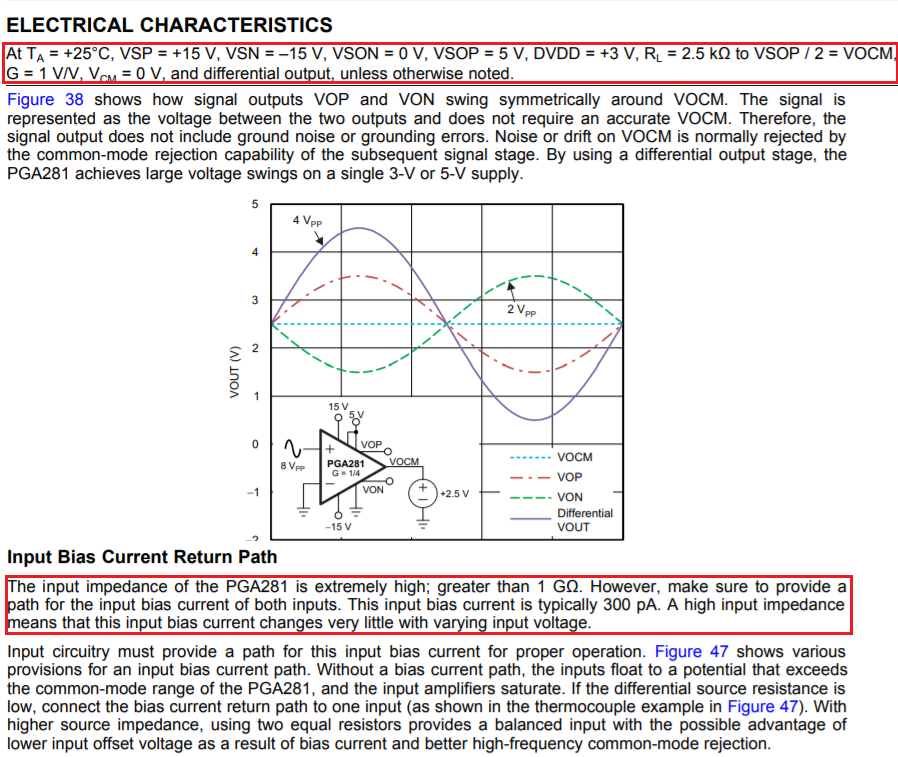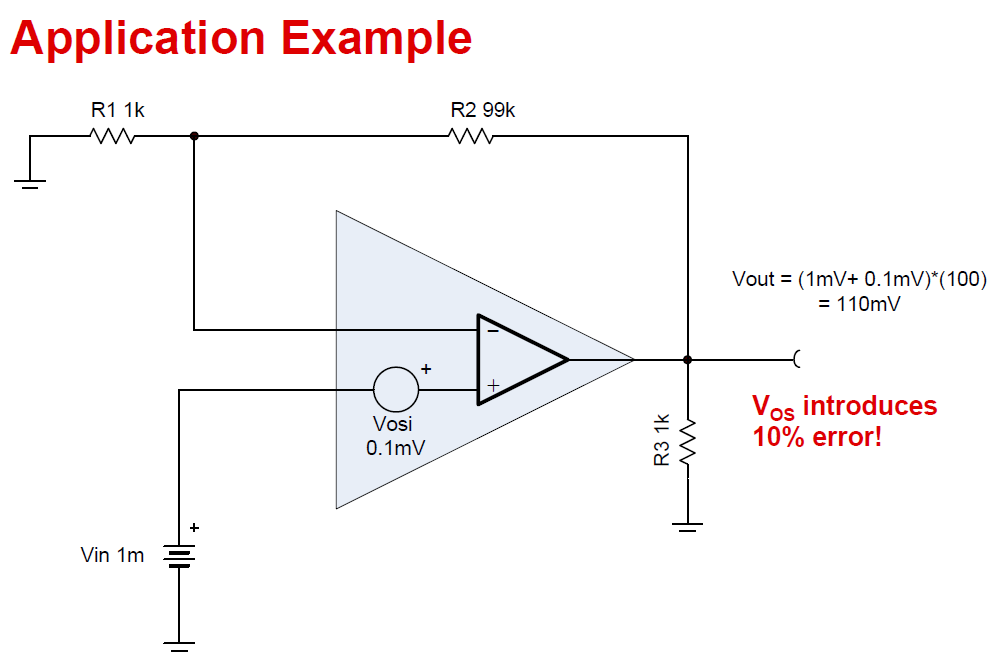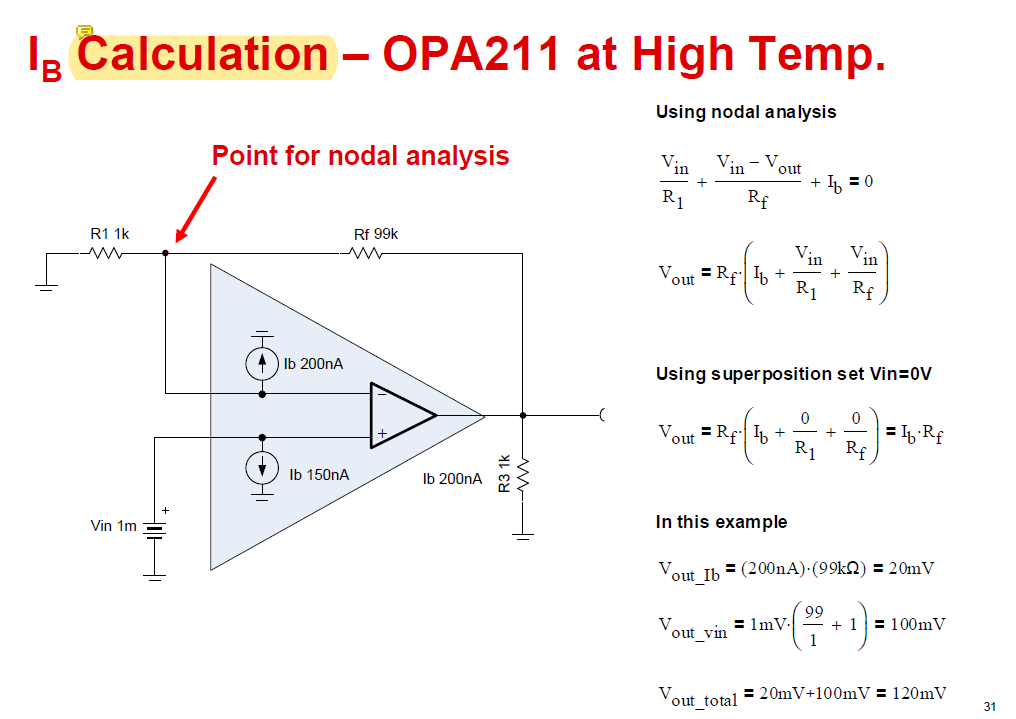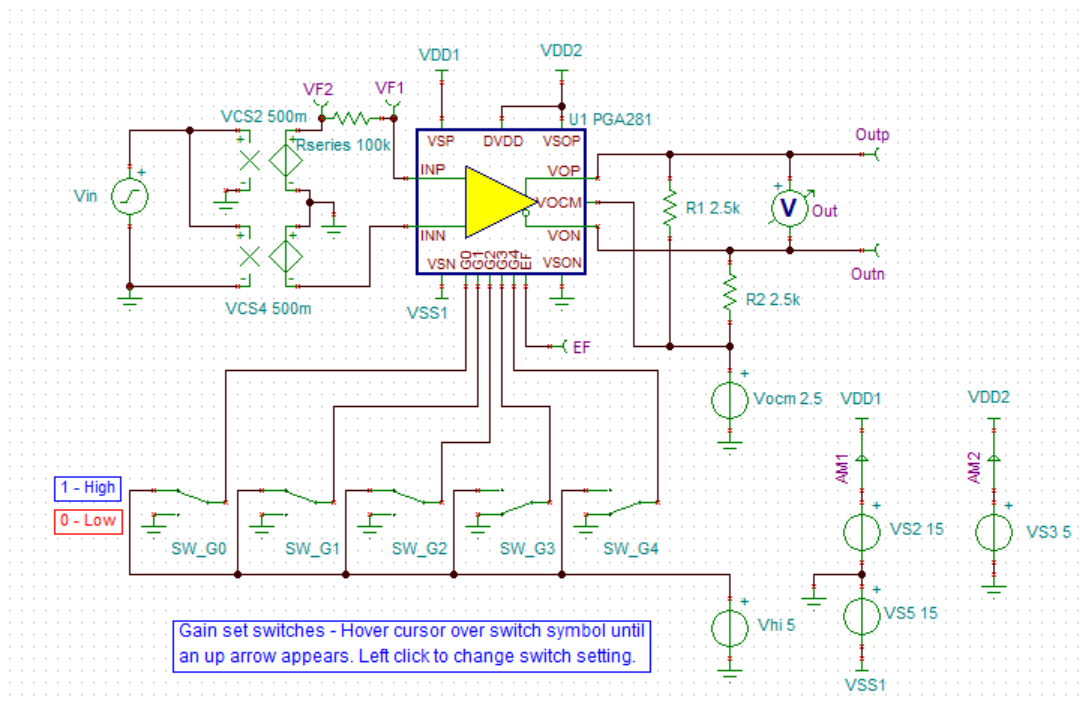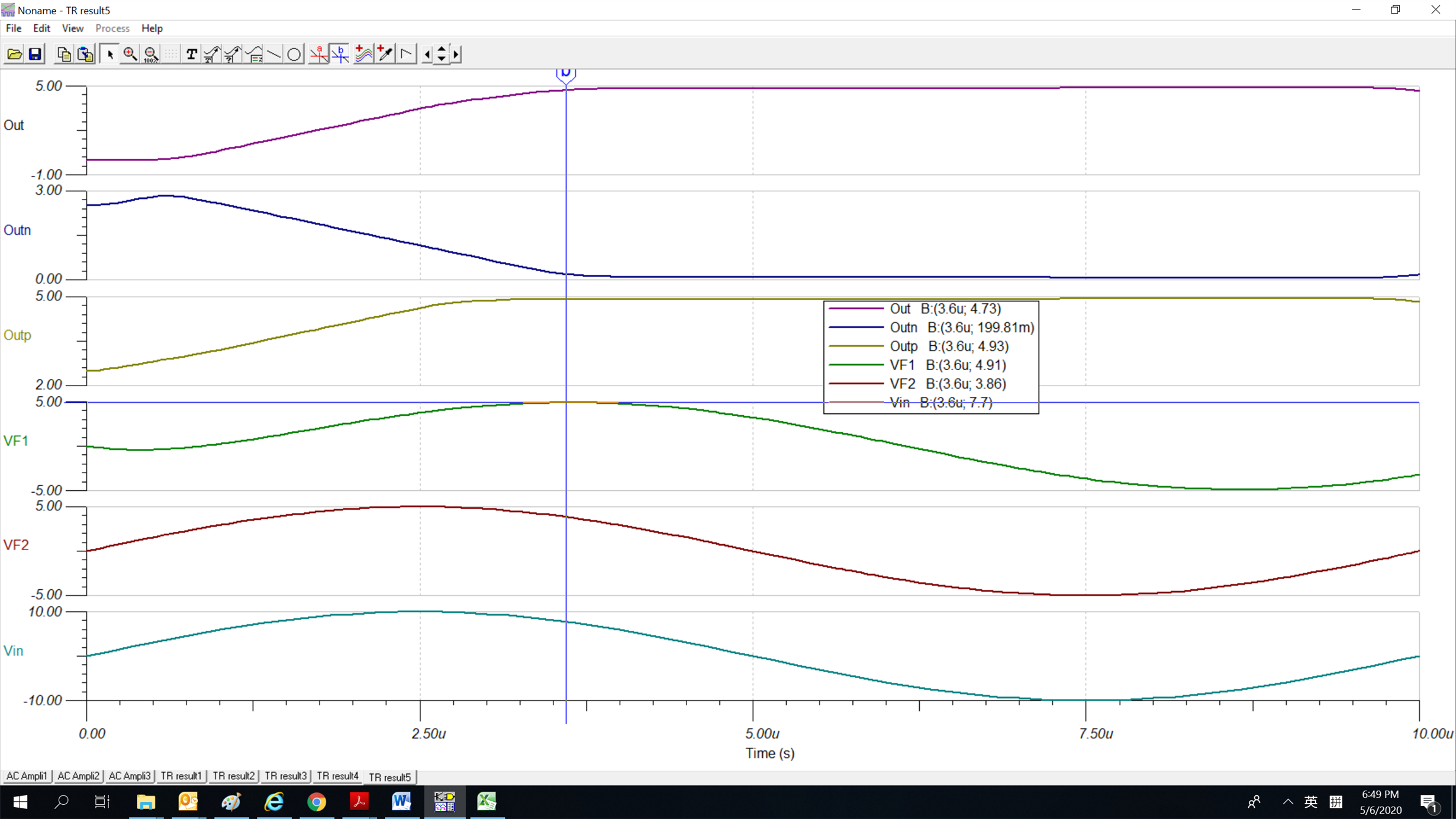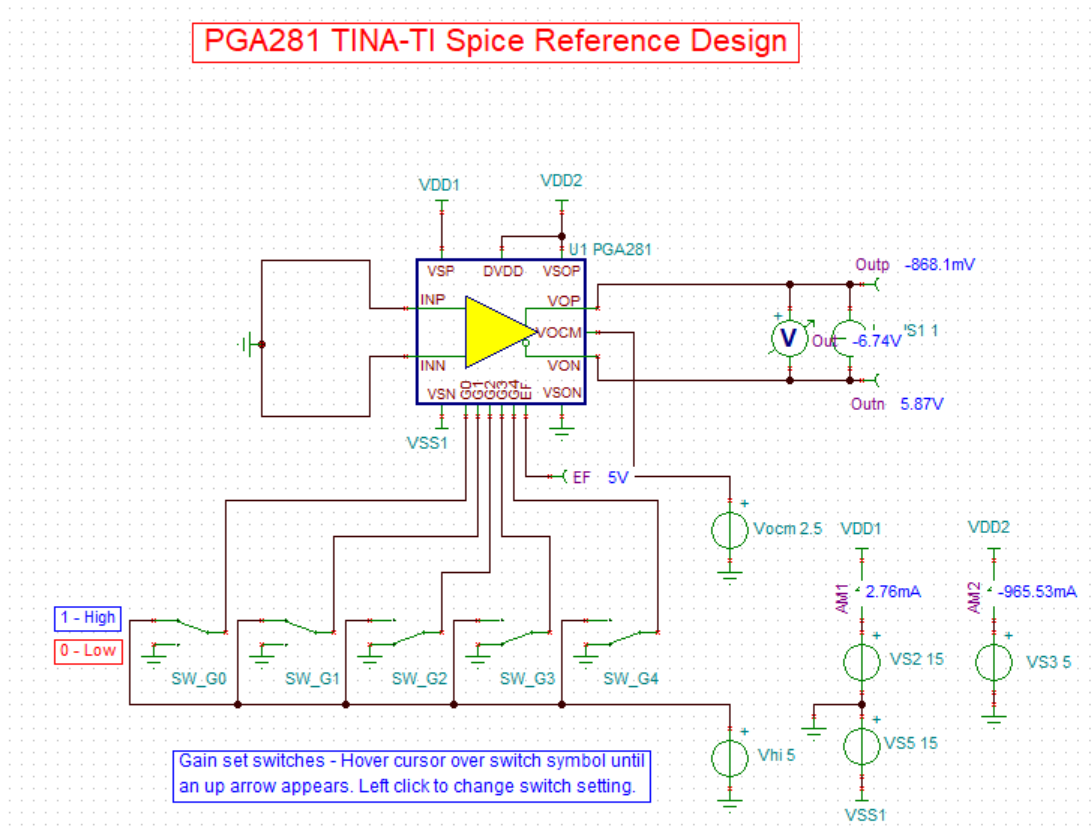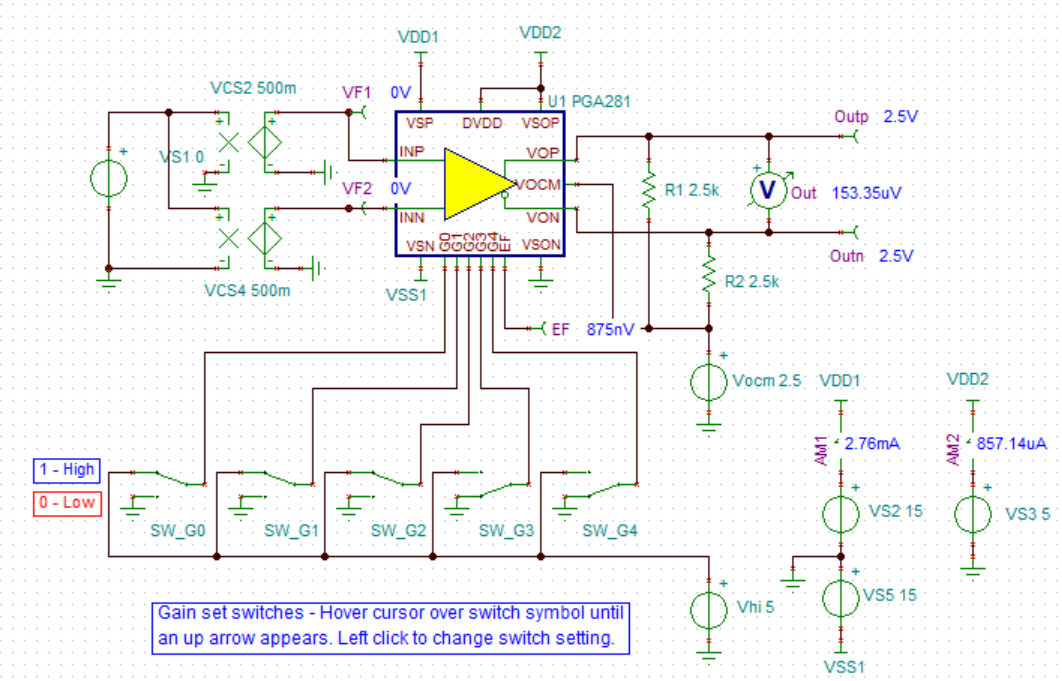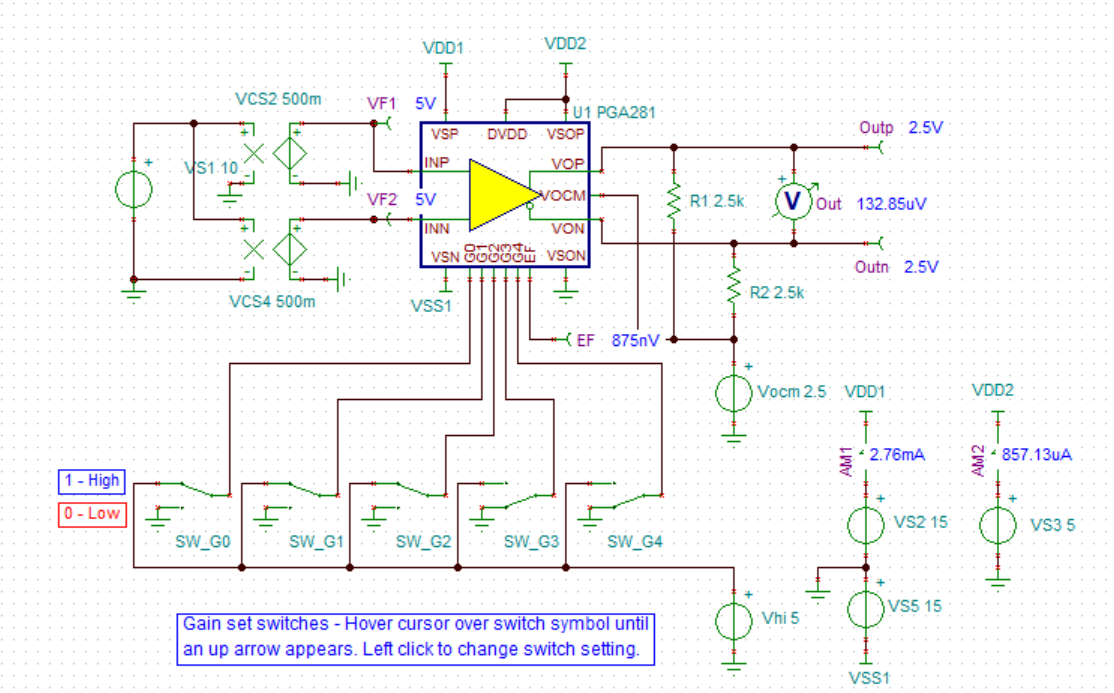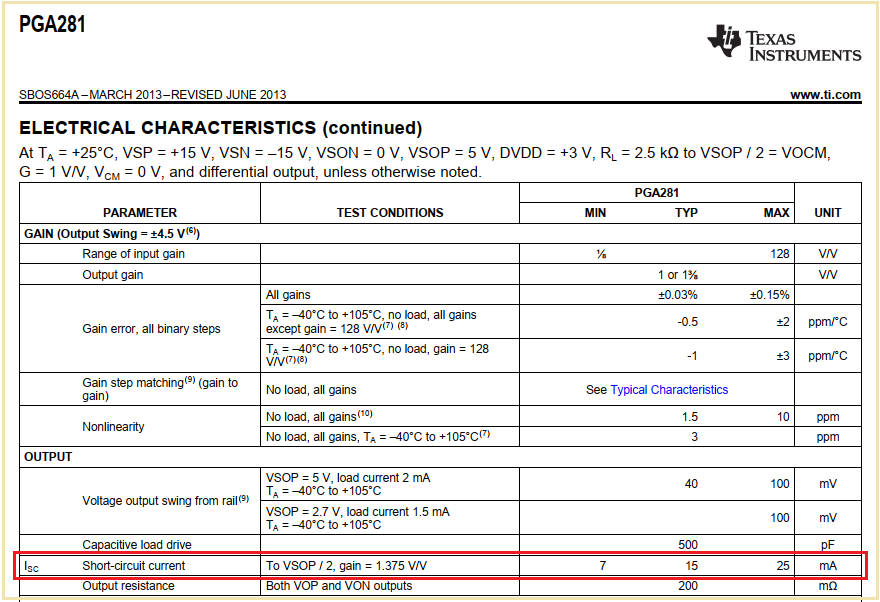Hi Expert,
I am going to use PGA281 in my project and need to verify the performance of PGA281, can you tell me how to test below spec with PGA281EVM? Thank you!
1. Rin and Ro of PGA281
2.CMRR
3.Input offset current, input offset voltage, input bias current
4.Output offset voltage
5.Gain error
6.Capacitive and resistive load drive capability
Best regards!
Rachel


